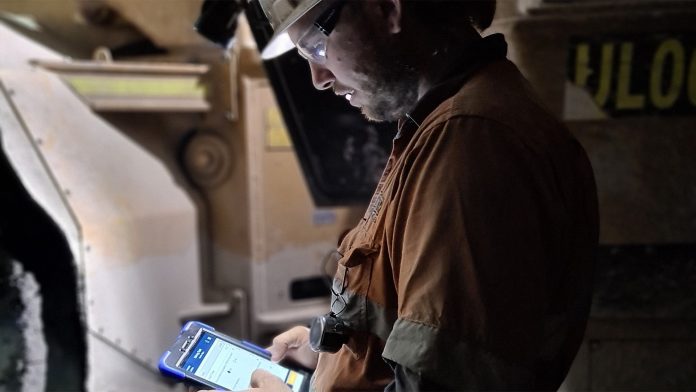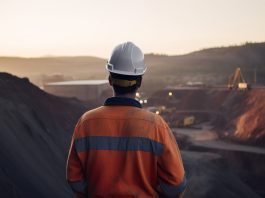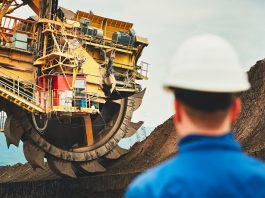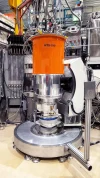Everyone loves new technology, but many underestimate the difficulty of implementing sustainability in the workforce. Digital Terrain explains how their solutions start you on this journey through sustainable implementation and locking in and embracing change.
With the introduction of new technology surrounding digitisation, automation, connectivity and Big Data, many miners, particularly in Australia, have always wanted to be ‘first to be second.’ When they finally embark on introducing technology, they frequently conduct a wide tender process, seemingly requesting the holy grail or five-star solution.
More often than not, the solution simply does not exist in its entirety, so the selected vendor must take on some substantial risk to anticipate what is in their customer’s heads. This leads to cost blow-outs, late delivery times and a frustrated workforce. Alternatively, the company decides not to use an external vendor and decides to build its own solution ‘in-house’ via an offshore developer. This initiative often fails or exceeds budget, resulting in reverting back to the market and implementing a known solution.
When the time comes to implement, the time required for the team to learn all the bells and whistles is significant. Many users spend considerable time learning techniques, modules, and new processes which they may not use again for many months, requiring re-training, resulting in the entire change management process becoming a struggle. Value is destroyed.
By approaching this challenge in small steps, improvements can be locked in, and value can be delivered earlier. The key to good performance and value creation is safety, consistency, and quality. Planning is critical. For example, there is no benefit in advancing a tunnel rapidly for three weeks only to have a loader stuck in the face with a tyre problem because the roadways were not cleaned. Equally, this also applies to technology implementation.
Identifying the right partner to assist you on the journey is essential. Both parties need to be able to collaborate and work together to implement a solution that is consistent with the level of technical maturity of your users and with a continuous improvement mindset.
For many new technologies, there is usually a smart Australian METS (Mining Equipment, Technology and Services) company that has a proven solution with valuable field experience, not just on one mine site, but on many. Having a central point of contact with your partner enables the METS company to collaborate and recommend solutions from other smart companies, communicating efficiently to deliver a combined and integrated solution.
Having an enthusiastic client champion is also essential to drive their organisation to ensure the system is utilised and properly applied. Face-to-face contact is always preferred to ‘remote’ implementations or train-the-trainer scenarios. Of course, follow-up support is also a key requirement to ensure ongoing success.
The key to success is getting visibility over your existing manual data processes, operating practices, safety, and quality, which can all yield substantial benefits before implementing massive (often disruptive) technology change.
This approach places the user in an advantageous position to take advantage of new technologies when they first become available. Working with suppliers that can integrate into existing systems enhances the value and success of the implementation. Ensuring your data model is related provides a clear ecosystem to draw valuable insights from the data and make more informed decisions quickly.
Adopting products such as Digital Terrain’s Data Hub ensures data can be efficiently passed through when required, minimising any rehandle and enabling a secure, single source entry and validation gateway. There are a number of other value-adding solutions from Digital Terrain which start your journey and enable you to build from there; below are some examples from key areas of the digitization value chain:
Digitise your data
Gain visibility by digitising all paper forms on your mine site. Validate your data to create value. This will not only yield significant savings in paper and data entry time but empower your leaders to make forward-looking decisions faster and with substantially more information at their fingertips.
Once you have a digitised version of your operation, you can then identify solutions to automate or augment and enhance your process, targeting high-value items as a priority. Machine learning and automation can then be pursued in the future once these building blocks are in place and proven. Understanding the information will also provide a sense check when implementing these automated data capture tools. This ensures that all data is captured and validated as opposed to simply installing a black box and hoping for the best – not knowing whether all the data was captured for the time period required.
Digital Terrain’s Customer Experience Manager, Sally Dye, said: “Our customers go paperless from day one with our Simbio solution, ensuring they embrace one system and a new way of work. I remember the satisfaction I got during one implementation when a supervisor came up to me excited to tell me we just saved him one hour a day on his paperwork. He got back to camp with his crew and did not wait for the foreman.
He became a great advocate for driving his crew to deliver quality data, the more responsibility they took, the simpler his life became, enabling them to focus on what to do and how to improve rather than trying to figure out why that tonnage figure was not correct or where the missing truck load went.”
Chris Allen, General Manager of Magman, said: “Magaman by Digital Terrain has solved the magazine records management and validation. A critical part of any operation is that explosives are safely monitored and accounted for. Having the ability to utilise a safe electronic device within the magazine ensures stock is accounted for and blasting QA is enhanced.”
With the users rewarded by immediate value, the focus can move to implement a longer-term roadmap of products and improvements to enhance a solid, stable, and consistent baseline. Customers with many operations, such as mining contractors, suppliers, and large mine owners, can be assured that their operations are standardised. This enables central standardisation and benchmarking of performance and knowledge sharing amongst the different locations.
Connect the workforce and the mine
Visibility achieved through connectivity also yields improvements. Simply accurately identifying where all machinery and people are located can provide simple, quick wins along the way delivering increasing effective utilisation.
At the same time, substantial improvements in safety can be delivered. Implementing communications and data networks is no longer seen as a luxury; it is a necessity. The costs are sometimes considered prohibitive, which may be the case in a developed mine, where substantial retrofit may be required.
In a developing mine, continuing to extend communications rather than relocate (as commonly the case for tele-remote loading operations) is a major change management issue. When the Mine manager sees a purchase request for over $500,000 for the latest instalment of network hardware, it can be very quickly refused. However, when you look at the cost of this infrastructure as a proportion of the cost of developing one metre of tunnel, it is a minor item. You could have a high-speed data network, compiled with a leaky feeder and a lot of other current technology for less than 4% of the total tunnel cost (on a typical contractor development metre rate). In turn, having access to data quickly and detailed QA records. This cost could be paid back immediately by optimising drilling consumables and explosives usage, which often accounts for approximately 8-10% of a tunnel’s cost.
Digital Terrain has a wide variety of in-house developed smart networking devices utilising mesh Wi-Fi, BLE and other technologies from trusted partners to help connect your entire mine, including connecting to the advancing face in an underground, via battery, wind-powered Wi-Fi or data over High Voltage cable.
Visualise your operation quickly with LiDAR
The emergence of Light Detecting and Ranging (LiDAR) scanning products utilising Simultaneous Localisation and Mapping (SLAM) is a foundational step towards automation. LiDAR has changed the way we can visualise and record the actual development of a mine. What used to take more than a day to complete with a Cavity Monitoring System (CMS) used to calculate the volume of a void now takes only a few hours to complete. The accuracy is amazing, eliminating the CMS limitations.
This technology coupled with an autonomous drone, will not only improve safety by removing people away from open holes(reduce risk), but can be done repetitively in multiple areas. Regular mapping of your environment can also help with the early detection of ground movement, identify areas of under or overbreak, and assist in determining the rectification of poorly blasted ground, to name a few areas where risk can be reduced through this technology.
This also forms the foundation of information required for a full visual representation of your mine. Another advantage is enabling remote tasks to be completed as opposed to having to attend the site to determine an action from an expert. Engaging a company which has experience in this field is crucial to embedding this technology on your site.
Though a drone is autonomous, it can still crash. Autonomy still needs to be in the right environment. Quite often, the space is too tight to autonomously fly or there is an unseen rock bolt sticking down from the drive, or you simply have not flown that use case before.
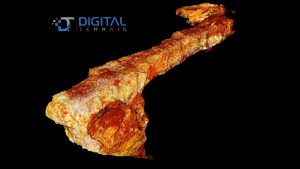
Engaging a service provider proficient in this area is essential to not only assist in training your personnel but also assist with design changes and processes to ensure you get the most out of the technology. Service providers have a wide variety of experience on a number of different sites, from operating the machine safely to optimising scan results and processing.
Digital Terrain was the first company to offer LiDAR scanning as a service in Australia. It has completed many different use cases across a large number of mines, working with the manufacturer and other providers across the world to support their customers. The offering is not just confined to scanning services but includes complex processing on demand, training, and dry hire of units, ensuring your journey into LiDAR scanning is effective, eliminating the learning curve, and ultimately creating value for the mining operation.
Andrew Rouse, CEO and Founder of Digital Terrain, explains: “Working with customers to initially demonstrate the benefit of a quality LiDAR scan and eventually embed the practice into their operation either through conducting the scan ourselves, or training the site personnel has been very satisfying. When a person sees a LiDAR-generated point cloud of an area for the first time, I watch for their facial expression and know they are impressed. You see their mind wander and think of the other use cases they could achieve by having this technology.”
Record underground activities for safety, productivity, and ESG impact
Visibility of your mine site’s environment, monitoring changes, and understanding the outputs from your smart devices can provide valuable insights into a mine, as well as leverage these state changes to action other systems in response.
Fifty years ago, we sent workers into an underground mine with a canary to see if it was safe to re-enter the mine after a blast of other events involving dangerous gases. If the canary passed out, the workers simply retreated until the fumes had cleared.
Today, nothing much has changed except the canary, which has been made redundant and replaced with a hand-held gas monitor. We still can put a re-entry crew in harm’s way without truly knowing the environment. If it is unsafe, the monitor will trigger an alarm.
To minimise this risk, we favour the side of caution and give extra time to be sure that it is safe. What if we could automatically detect a blast has occurred and alert the crew (via email, SMS or device message) when it is safe to re-enter? In addition, when you know the gases, temperature, or dust will reach a certain level, fans can be turned on remotely based on a trigger event.
Pumps could be remotely initiated to start pumping, or sprays could be activated to wash down the face to enable tele-remote operations over shift change. Fans could be activated when personnel or equipment enter an area or increase output due to an increase in activity in the area (Vent On Demand).
The Digital Terrain suite of Operational Technologies includes such products and many more for recording additional items such as machine data for condition monitoring and asset and personnel tracking. Our solutions can reduce power and water consumption, thus reducing the operation’s ESG impact.
Crawl before you walk
Rouse continues: “Don’t implement machine technology such as automation until you have maximised your traditional operating practices. Don’t mask poor performance with technology; use technology to improve performance. Gradual and consistent change is a key component in workforce adoption.”
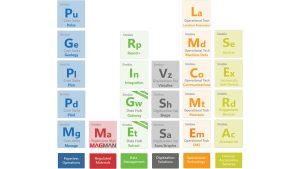
At Digital Terrain, we recognise this issue and consider technology adoption as a journey for our customers and their workforce. Implementing small incremental change that adds value to their experience consistently enables the right behaviours to be adopted and embrace the new system or process sustainably. Digital Terrain has first-hand knowledge of mining environments through its contractor and mine owner roots. Rouse explains: “We were miners before we were technologists. We understand mining and how to create value.”
We were also proud pioneers on the ‘bleeding edge’ (bleeding due to the fact you often spend a lot of money to be first). We managed to assemble a great team and user base to ensure the success of the product development and take-up. Having actual experience in the field makes it easy to communicate with our customers and develop appropriate solutions. We were not afraid to push the envelope.
Our technology is proudly sovereign to Australia. Our Simbio core suite was a world first in large-scale app deployment underground, and Magman was the first ever to safely capture electronic records in an explosives magazine on a device.
Our Simbio Elemental table covers a wide variety of products and solutions, which come together to deliver high-quality validated data and derive actions and insights from the information collected. We turn data into information, knowledge and wisdom.
We have further enhanced our product suite by strategically partnering with several like-minded companies, focussing on integration where it is needed: underground and between devices, not integrated just via the cloud.
There is a substantial competitive advantage in having a workforce with a high operating maturity in the selected system. This only comes with time – it is a journey. The sooner you start, the sooner you can get to this level of maturity. Your engaged workforce will become used to change as it is a regular occurrence. Embrace the digital future!
Please note, this article will also appear in the 19th edition of our quarterly publication.

